Business and Technology Consulting Services
Unveiling the strength of technology with our services
What we are thinking about

Telling the future by looking at history
Are you frequently finding that the outcomes of your decisions are not aligned with your expectations? From predicting business performance to personal stock picks, people have been trying to forecast where the future will go. Prophecy, guesswork and crystal balls have led us to using the scientific method as a somewhat reliable method for prediction.
Using statistical processes for prediction has proven to be successful but too often people fail to use reliable tools and often will rely on a hunch, an inclination or a “gut-feel” for making a decision. By bridging the appropriate decision-making processes with statistical techniques, the chance of improving the predictability of events can occur.
In the book, Thinking Fast and Slow, Nobel Memorial Prize in Economics Science recipient, psychologist and author, Daniel Kahneman posits that while we like to think of ourselves as rational in our decision making, the truth is that we are subject to many biases. By understanding these biases and considering them as part of the process of our decision making, we can greatly improve the likelihood of the predictive outcomes that we seek.
Chip and Dan Heath, in their book Decisive suggest that a decision-making process be divided into four steps:
- encounter a choice
- analyze your options
- make a choice
- live with your choice
Focusing on step 2 analyzing your options can lead to paralysis by analysis. It therefore is important to devise ways to overcome the fear of making the wrong decision or the perfect decision every time. Consider ways to shift your perspective. For example considering doing a pre-mortem (play the outcomes forward) or consider what the outcome might be of doing the opposite. The important part of the work here is to gain assurance that the right things are considered.
Richard H. Thaler and Cass R. Sunstein, further contributed to the science of Behavioral Economics in their book, Nudge: Improving Decisions About Health, Wealth, and Happiness by drawing on research in psychology and behavioral economics and providing evidence that human mistakes are due to their use of heuristics, fallacies and the influence that social interactions. Using Kahneman’s references to the two types of systems that characterize human thinking, the “Reflective System” and the “Automatic System”, combined with the conflicts between the two systems we encounter in making a decision.
As the science of Behavioral Economics continues to gain momentum, improvements in statistical techniques and speed of translating data into useful decision-making information occurs, opportunity for gaining an “edge” over your predictions can lead to more successful outcomes.
If you are interested in discussing further how you or your organization can improve its decision-making processes, please reach out to us.

INFORMATION CHAOS
Is your organization experiencing these pain points?
• Key business objectives and results are not available to all personnel on a day to day basis.
• Information delivery is not centrally available, and team members often find themselves navigating a maze of incongruent sources to obtain information for day to day business decisions.
• Diminished team cohesion because people are not on the same page.
• Missed opportunities due to a lack of relevant information.
If these pain points are occurring, your organization may be experiencing information chaos.
Despite the abundance of information technology solutions, information chaos is common in many businesses and results in a fundamental addition to the cost of doing business as well as diminished potential of all stakeholders.
These are some of the practical characteristics of information chaos:
• Operational information is difficult to obtain, not timely and not relevant to team members.
• Information redundancy with multiple instances of the same data being captured and stored in order to present the data as information in different ways to meet different requirements.
• Each team member has developed their own way of capturing, storing and distributing information.
• Spreadsheets are a primary vehicle for data storage, resulting in siloed data that is not available to all who need it.
• Critical information consistently lags operational timelines.
• There is no unified way of accessing information.
The solutions to information chaos require the capture, storage and transformation of data into relevant information that serves as a feedstock into a company-wide information delivery framework. If you are interested in discussing how CloudFusion can help you develop and implement a scalable plan to manage these critical resources and take you from information chaos to information harmony, please contact us.

Tired of putting band-aids on your systems
Are you in a spiral of patching your legacy systems to the point that it is costing you money?
How long should a system last? Consideration should periodically be given to evaluating an organization’s technology advantage. The combination of software applications making up a portion of the company’s systems are integral to the success of nearly every organization.
Software like any system has a life span. Core applications versus more specialized applications lives may differ but characteristics of software life span are very similar. When considering life span asking the Who, What, Where, When and How questions regarding aspects of software can be telling. You may consider the following:
Is the development company a well-capitalized, publicly traded company? Well capitalized versus entrepreneurial software development companies depending on the application can be a bit of a “catch-22”. If a well-capitalized company is subject to its shareholder’s objectives of short-term profitability it may opt to minimize the amount of research and development and just maintain its software. This can frequently lead to platform and architecture issues associated with the ever changing world of software. Imagine a “first generation” programming language application developed on mainframe computer for managing financial transactions. While it continues to operate it may require in-house resources to maintain the software to keep it functional. A question you may ask “is functional what is needed for my organization or our competitors gaining market share because of a technological advantage”?
Are the original developers of the software still with the company? Frequently software companies get purchased by other software companies, leaving the original entrepreneurial architect and developers in a quandary. The architect and development team in most cases has agreed to non-compete and to stay around the acquiring company for a period of time. But all too frequently once this time has passed, the original architect and the development team may find better, faster, more productive ways to offer similar technology solutions and establish a new entity to develop their application. Look at your existing software and see if this is the case.
Is the product developed generic across users, companies, or industries? Consider word processing, spreadsheet, and presentation applications as generic. Applications like payroll processing, customer relationship management, accounting general ledger, accounts payable would be business functional. A third level to consider is specific software within a particular business function. For example, trading platform software for market analysis for the equity trader, or seismic interpretation solutions for the geophysicist would be very specific to a functional area. Think of these as tools of the trade. Focus on tools of the trade software first.
When evaluating your stable of software applications consider looking at whether legacy systems need care or replacement. If care is required consider whether some additional integration can be done to enhance how systems integrate with one another. If replacement is required consider Software as a service, Platform as a service, Infrastructure as a service as alternatives to contracting for software that resides on site. These business models offer companies the opportunity to focus more on its core business initiatives while incurring less overall cost for the software in terms of training, setup, and hardware infrastructure.
If you are interested in discussing how CloudFusion can help you in the evaluation, implementation or integration of software within your organization please contact us.
